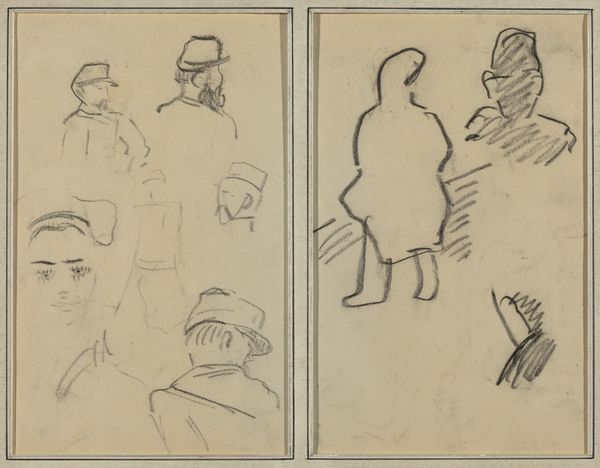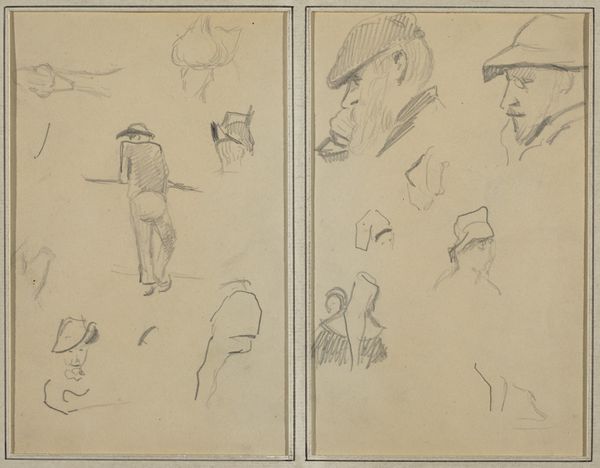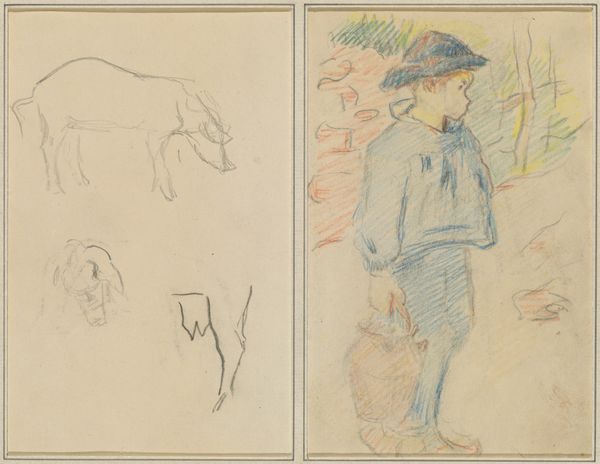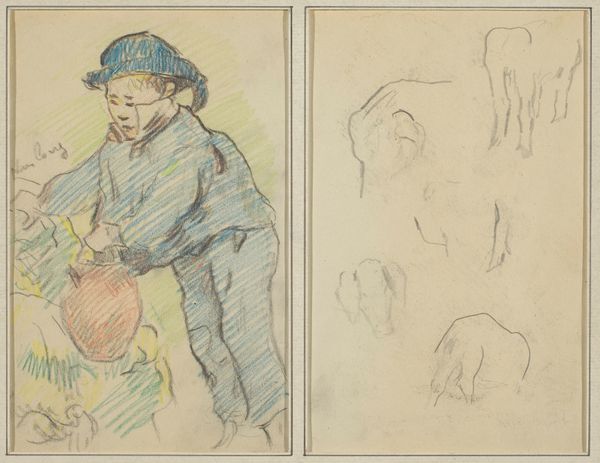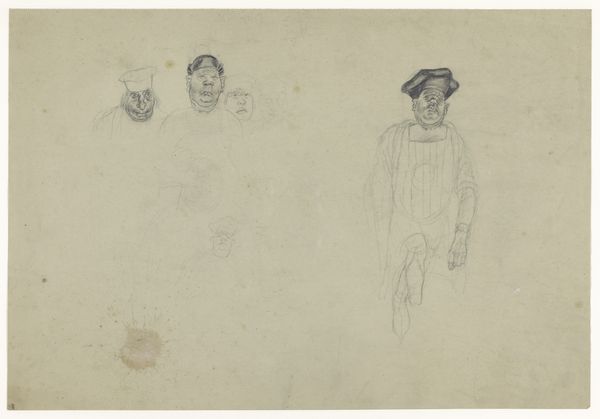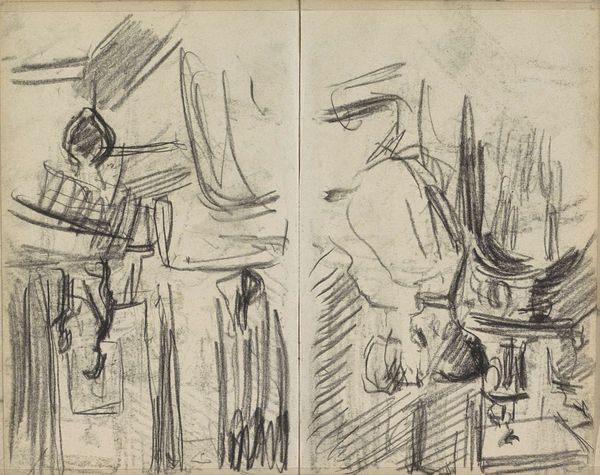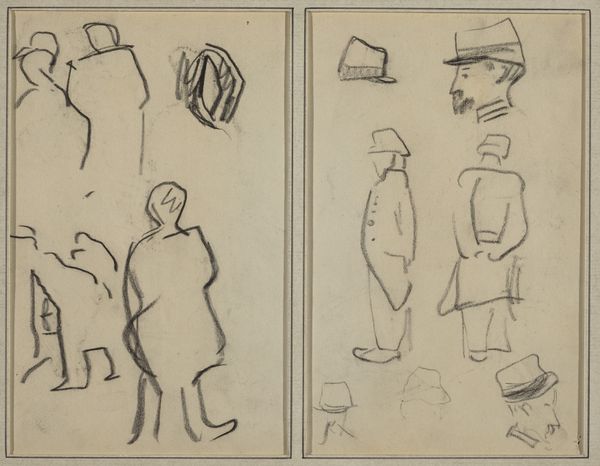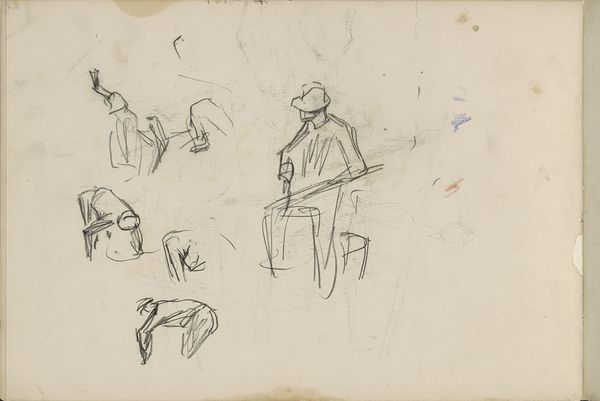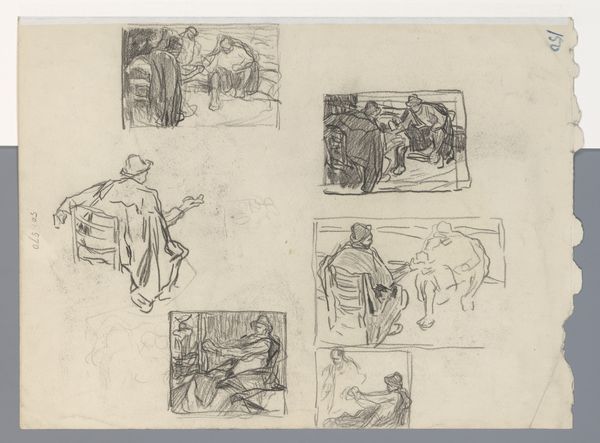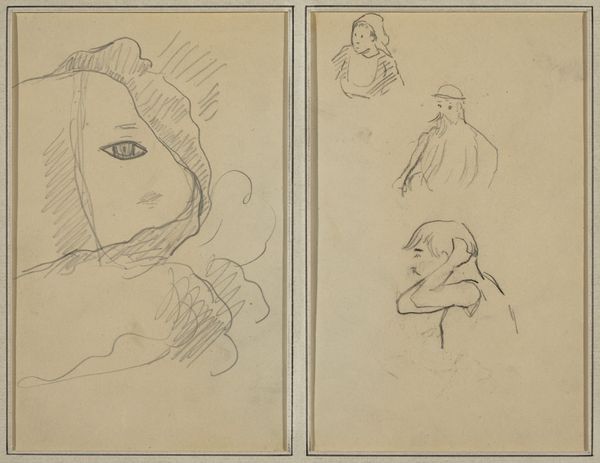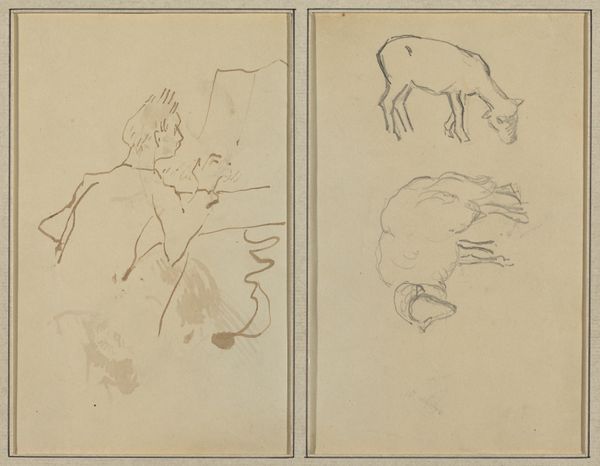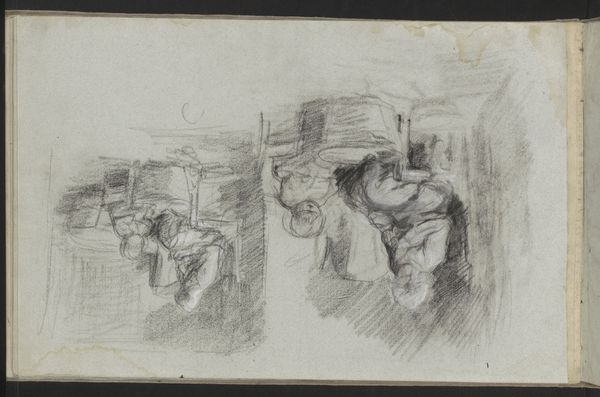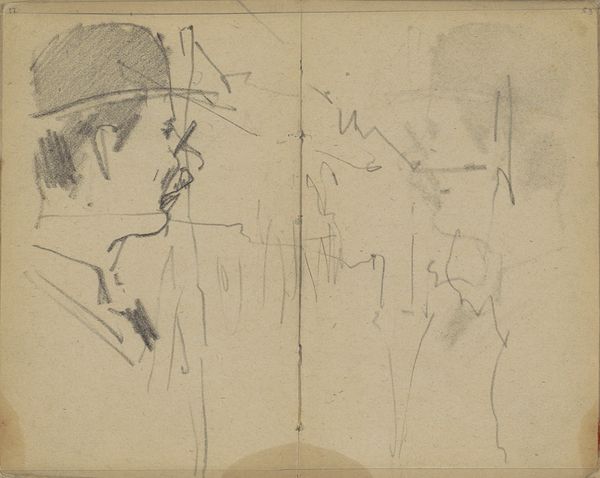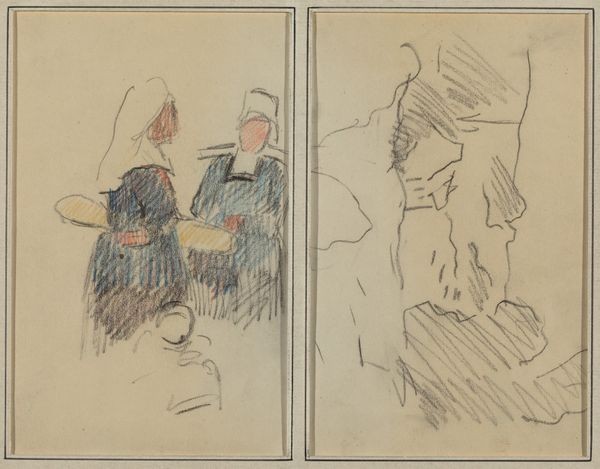![Breton Boy Tending Geese; Cows and a Figure Leaning on a Ledge [verso] by Paul Gauguin](/_next/image?url=https%3A%2F%2Fd2w8kbdekdi1gv.cloudfront.net%2FeyJidWNrZXQiOiAiYXJ0ZXJhLWltYWdlcy1idWNrZXQiLCAia2V5IjogImFydHdvcmtzLzk2NTNjNjUwLTU2NWEtNGYxYS1hM2U2LTIwNjExYjQyYmNiNy85NjUzYzY1MC01NjVhLTRmMWEtYTNlNi0yMDYxMWI0MmJjYjdfZnVsbC5qcGciLCAiZWRpdHMiOiB7InJlc2l6ZSI6IHsid2lkdGgiOiAxOTIwLCAiaGVpZ2h0IjogMTkyMCwgImZpdCI6ICJpbnNpZGUifX19&w=3840&q=75)
Breton Boy Tending Geese; Cows and a Figure Leaning on a Ledge [verso] 1884 - 1888
0:00
0:00
drawing, pencil
#
portrait
#
drawing
#
impressionism
#
pencil sketch
#
landscape
#
figuration
#
pencil
Dimensions: overall: 16.9 x 22.6 cm (6 5/8 x 8 7/8 in.)
Copyright: National Gallery of Art: CC0 1.0
Curator: This drawing is attributed to Paul Gauguin and is titled "Breton Boy Tending Geese; Cows and a Figure Leaning on a Ledge [verso]". It's rendered in pencil and believed to have been created between 1884 and 1888. Editor: Immediately, I'm struck by the contrasting qualities. One side shows the clear, confident lines describing the boy and geese; the other is quite ephemeral, gestural really. The material disparity suggests different functions or perhaps even different moments in the artistic process. Curator: Indeed. Let's consider the social context. Gauguin was deeply interested in portraying rural life and "authentic" cultures, specifically those of Brittany at this time and later, of course, Tahiti. His engagement wasn’t free of an imperialist impulse however, which we have to take into account. Editor: And the medium itself contributes. Pencil is easily portable, cheap, readily available. Was it a practical choice connected to these themes—sketches of everyday Breton life from accessible resources available when in transit, en plein air? Or a more calculated method aligned with ideas about “low” and “high” art making that he'd want to challenge? Curator: Exactly. His focus on everyday life, portraying laboring individuals…it reflects a broader artistic shift away from academic ideals and toward a more realistic and democratized vision of society, although again we need to consider it in the light of the artist’s biases and the male gaze present here. It opens questions around class, labor, the depiction of marginalized communities within the art historical canon… Editor: You raise such critical points. The reverse sketch…is it more study of form, of composition and technique away from those pressing ideas, social commentary, that surround our understanding of Gauguin today? The immediacy offered here through sketching versus the other artwork gives space to look at those individual parts he later returned to and made great paintings of. Curator: It allows us to view him grappling with visual representation. Editor: Yes, a raw materiality that we do not associate as easily with him otherwise. Curator: Seeing it, examining this process opens a broader perspective about this crucial period. Editor: Absolutely, beyond the finished masterpieces, to understand how such compelling pieces even came to be conceived through readily available material means.
Comments
No comments
Be the first to comment and join the conversation on the ultimate creative platform.
